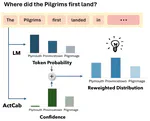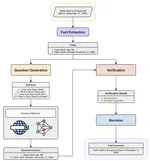About Me
I am a final-year Ph.D. Candidate in Computer Science and Engineering at the University of Michigan, working with Prof. H. V. Jagadish and Prof. Lu Wang. My research in Natural Language Processing (NLP) focuses on advancing Responsible AI. I develop frameworks for evaluating and enhancing Language Models' Factuality through novel evaluation methods, intervention techniques, and decoding strategies. During my PhD studies, I completed a 9-month internship with Apple's Knowledge Platform team, collaborating with Yunyao Li on LLM content verification and revision. I hold a master degree in Computer Science and a bachelor degree in Computer Engineering.
I'm on the job market for Industry Research positions!
- Language Model Evaluation
- Language Model Factuality
- Interpretibility
-
PhD in Computer Science and Engineering, 2025 (expected)
University of Michigan
-
B.S. in Electrical and Computer Engineering, 2018
University of Tehran



